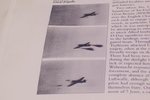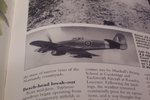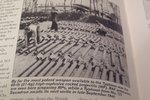dirkpitt289
Master Sergeant
What better place to go to find out information about WWII aircraft then right here.  I still haven't decided on a subject for the D-Day/ Invasion stripes Group Build. Seeing as there are already a number of P-51 Mustangs entered I thought I would try something different and something that was currently in my stash. Looking around I found that the Hawker Typhoon was involved in the D-Day invasion and I though this would be a Kewl subject. What little I found seems to surround the battle at Falaise where the Typhoons were equipped with under wing rockets. Most of the sights I found revolve around Paintings. Can someone turn me on to a website or a book (Still in publication) that could help me?
I still haven't decided on a subject for the D-Day/ Invasion stripes Group Build. Seeing as there are already a number of P-51 Mustangs entered I thought I would try something different and something that was currently in my stash. Looking around I found that the Hawker Typhoon was involved in the D-Day invasion and I though this would be a Kewl subject. What little I found seems to surround the battle at Falaise where the Typhoons were equipped with under wing rockets. Most of the sights I found revolve around Paintings. Can someone turn me on to a website or a book (Still in publication) that could help me?







